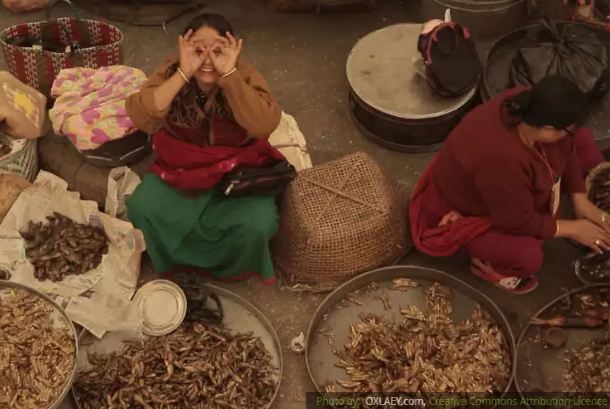Women empowerment! While a lot has been done around the globe, help or awareness has not yet reached every corner of the world and a majority is still not privileged to experience it. But, there is a place in India that can prove to be an example; a place, where the entire state supports women empowerment. To get a true picture of this, you need to visit Ima Keithel, in Manipur, which is a 500-year-old all-women market. Here, you will witness how women empowerment is not only preached, but also practised.
As you make your way through the alleys and reach the market, a vibrant array of spices, fresh fruits, vegetables, and textiles; Ima Keithel can be very easily mistaken for any other regular market. But, look closely and you will be awestruck to realise that the 5000 traders managing these stalls are all women.
It is the largest all-women market in Asia; needless to mention, this is manned only by women. This sprawling market situated at the centre of the city has long been a trading hub for people in Manipur.
While it is still unknown as to how and when this unique market originated, experts are of the view that its origin dates back to 16th century. Ima Keithel, which translates to ‘Mother’s Market’ initially started with few stalls run by women. It started growing exponentially over the years. Now, the market has thousands of women traders selling items lie textiles, household items, and many more things.
The story of Ima Keithal’s foundation
As per scholars, Ima Keithel market came into picture because of Lallup-Kaba, an ancient labour system that was imposed in Manipur. As per the said labour system, men from the Meitei community were sent to faraway islands to fight wars. Women stayed back to support and take care of the household; in fact, women had to take all responsibilities, right from cultivating their paddy fields, to weaving, making, and crafting items that can be sold in markets. This eventually led to the formation of Ima Keithel market, where women started playing the central role.
History
In 1891, the British introduced stringent political and economic reforms. This had adverse impact on the market. Measures like high taxation were imposed that eventually disturbed the socio-economic fabric of the state. All these led to the formation of ‘Nupi Lan’ (Women’s War) movement in 1939 to revolt against the atrocities of the British. Rallies and mass meeting were held to protest against the British policies.
The British, in order to thwart the agitation, tried to sell market’s buildings to external buyers and foreigners. The women of Manipur stood against the British and defended their market aggressively.
Nupi Lan eventually faded out when the World War II broke out and Manipur became the war zone for the Japanese and allied forces. However, the pro-active role played by the women in Nupi Lan left an indelible mark in the society, which eventually became a symbol of women empowerment and gender equality.
More facts about Ima Keithel
- Only married women are allowed to run the stalls in this market, as it is considered to be a privilege that is passed on from one generation to another.
- The market is run by a union, which has been formed by women traders. The union manages the market and also runs a credit system that allows women traders to borrow money to buy goods. The borrowed money can be paid back later.
- Ima Kheital is more than just a marketplace. It is a hub of socio-political ideas, information exchange and a symbol of gender justice.
- Manipuri people affectionately call this market ‘Queen of Market.’
- The state government has made the presence of male vendors in the market a punishable offence
It is said that markets give you an impression of the society you live in. In fact, marketplaces are impulse of society. If not for buying anything, you can of course plan a visit to this place to witness the real strength of women. And who knows, you might get some really good deals too!
Article Source: Times of India




